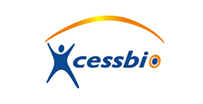
| Molecular Weight: | 452.55 |
| Formula: | C24H32N6O3 |
| Purity: | ≥98% |
| CAS#: | 1207360-89-1 |
| Solubility: | DMSO up to 50 mM |
| Chemical Name: | (S)-1-ethyl-3-(4-(4-(3-methylmorpholino)-7-(oxetan-3-yl)-5,6,7,8-tetrahydropyrido[3,4-d]pyrimidin-2-yl)phenyl)urea |
| Storage: | Powder:4oC 1 year. DMSO:4oC3 month;-20oC 1 year. |
Biological Activity:
GDC-0349 is a potent and selective ATP-competitive inhibitor of mTOR with IC50~3.8 nM. It has remarkable selectivity over 266 kinases, including all isoforms of PI3K (less than 25% inhibition when tested at 1 μM against Invitrogen kinase panel). GDC-0349 demonstrates pathway modulation and dose-dependent efficacy in mouse xenograft cancer models. When dosed orally once daily in athymic mice in a MCF7-neo/Her2 tumor xenograft model (PI3K mutation), GDC-0349 inhibited tumor growth in a dose-dependent manner. It was also efficacious in other xenograft models, including PC3 (PTEN null) and 786-0 (VHL mutant). GDC-0349 inhibited downstream markers of mTOR, including phospho-4EBP1 and phospho-Akt(S473) in an in vivo PK/PD study in mouse, consistent with an inhibition of both mTORC1 and mTORC2 complexes. Currently GDC-0349 is in Phase I clinical trials to evaluate the safety and tolerability in patients with locally advanced or metastatic solid tumors or Non-Hodgkin's lymphoma.
How to Use:
- In vitro:GDC-0349 was used at 1 µM in vitro and in cellular assays.
- In vivo:GDC-0349 was orally dosed to mice at 30-80 mg/kg once per day.
Reference:
- 1. Zhonghua Pei, et al. Discovery and Biological Profiling of Potent and Selective mTOR Inhibitor GDC-0349 (2013) ACS Med. Chem. Lett., 4 (1), pp 103–107
 GDC-0349_spec.pdf
GDC-0349_spec.pdf GDC-0349_MSDS.pdf
GDC-0349_MSDS.pdf
Products are for research use only. Not for human use.
ebiomall.com






>
>
>
>
>
>
>
>
>
>
>
>
我用conA和LPS分别刺激脾细胞,当然细胞均有明显的增殖,可是如果把这两种有丝分裂原同时用来刺激细胞时,细胞的增殖明显受到了抑制,比起单独采用ConA或者LPS都低很多。conA和LPS分别刺激T细胞和B细胞的增殖,两者同时加入时,作用应该更强,为什么反而大幅减弱呢?
此外,我研究的这种成分单独刺激皮细胞时,细胞也有一定程度的增殖,但是如果这种物质与conA联合使用时,比起单独用conA时,细胞的增殖程度明显降低了一些,这又是什么原因呢?难道可以解释为我研究的这种物质有类似于LPS的作用——刺激B细胞增殖?
如果真的是这样来解释,哪位大侠能把第一个现象(conA和LPS共同作用产生拮抗)的机理帮我解释一下呢?
当抗体结合到示踪剂上时,340nm的激发光激发铕标分子,导致能量转移到Alexa Fluor 647染料上,结果产生665nm的发射光。荧光的强度与样品中的cAMP含量成反比。
本试剂盒用于检测在GPCR激动剂刺激下活细胞或者细胞膜制备品产生的cAMP。对于偶联Gαs的受体,激动剂刺激导致665nm的荧光强度降低,而拮抗剂则可以逆转这一效应;对于偶联Gαi的受体,在激动剂刺激的同时用forskolin刺激cAMP产生,那么激动剂则抑制forskolin诱导的cAMP的生成,因此对照只给forskolin的细胞组可以通过665nm荧光强度的增加反应激动剂的效应。
该试剂盒的灵敏度很高,室温下反应在20h内是稳定的。本试剂盒适用于在384孔板中进行24μl的微量分析。
2.保存条件
避光2~4℃保存,过期时间见装。
3.盒内试剂
cAMP标准品:1管,1ml。(50μM)
生物素标记的cAMP(b-cAMP):1管,25μl。
铕标的抗生物素蛋白链菌素:1管,25μl。
荧光标记的cAMP抗体:1管,40μl。
检测缓冲液:1瓶,25ml。
4.需要自配的其他溶液
l Hank’s balanced salt solution (HBSS): NaCl 8.0g、CaCl2 0.14g、KCl 0.4g、 KH2PO4 0.06g、Na2HPO4?7H2O0.09g、MgCl2.6H2O0.10 g、MgSO4.7H2O0.10 g、NaHCO30.35g、葡萄糖1.0g,加H2O至 1000ml (用7.5%NaHCO调节PH值=7.4)
l Versene消化液(1L):EDTA 0.372 g,NaCl 8.0g,KCl 0.20 g,KH2PO40.20g,Na2HPO4 1.15 g,D-glucouse 0.2 g,pH 7.4
l HEPES缓冲液(1mol/L):取2.383gHEPES溶于10ml去离子水中。
l 7.5%BSA溶液:取0.75gBSA溶于10ml去离子水中
l 0.5M IBMX溶液:11.11mg IBMX溶于100μl DMSO中,-20℃冻存。
l 刺激缓冲液(SB):14 ml HBSS(1×)+75μlHEPES(1mol/L)+200μlBSA (7.5%)。(注:在测定细胞cAMP时,反应缓冲液中要加入IBMX 0.5mmol/L)
l 吗啡贮存液(10mM):盐酸吗啡37.585mg溶于10ml生理盐水中,0.22μm滤膜过滤除菌,4℃保存备用。
l 纳络酮母液(100mM):纳络酮4mg溶于100μl 生理盐水中,用时工作液按照1:500稀释,溶剂为含有IBMX的反应缓冲液。
抑制剂刺激细胞后,需要用PBS清洗后再做后续实验吗
我做的是细胞因子的刺激和抑制某条通路后观察是否有影响,分组为空白组,空白+抑制剂,刺激组,刺激+抑制剂,最开始用的单因素方差分析,LSD-T和SNK-Q检验,但是同学说我这里面有两个处理因素,所以不能单因素方差分析,应该直接空白和空白+抑制,空白和刺激,刺激和刺激+抑制剂进行独立样本T检验,现在脑子是混乱的,拜托园子里的大神们帮我看看,感激不尽!!









